Abstract
This chapter explores the important question of whether, and under which condi-tions, children alternating between two distinct family dwellings can develop a sense of home that might nourish a sense of belonging to their sometimes, complex family configurations. We first present a theoretical framework to understand the various dimensions that influence children’s sense of home in shared custody arrangements, building on Hashemnezhad et al. (2013)’s work. We then show how this framework can be operationalized in quantitative research. For this purpose, we introduce the Sense of Home Instrument (SOHI), a new instrument for measuring the impact of ma-terial and behavioral-relational dimensions on teenagers’ sense of home at their moth-ers’ and fathers’. We then illustrate its relevance and value with supporting analyses of data collected through a survey conducted with Belgian adolescents aged between 11 and 18. In doing so, we propose new avenues for research on the consequences of divorce and separations for children’s identity construction and belonging, where the spatiality of family life is taken into-account.

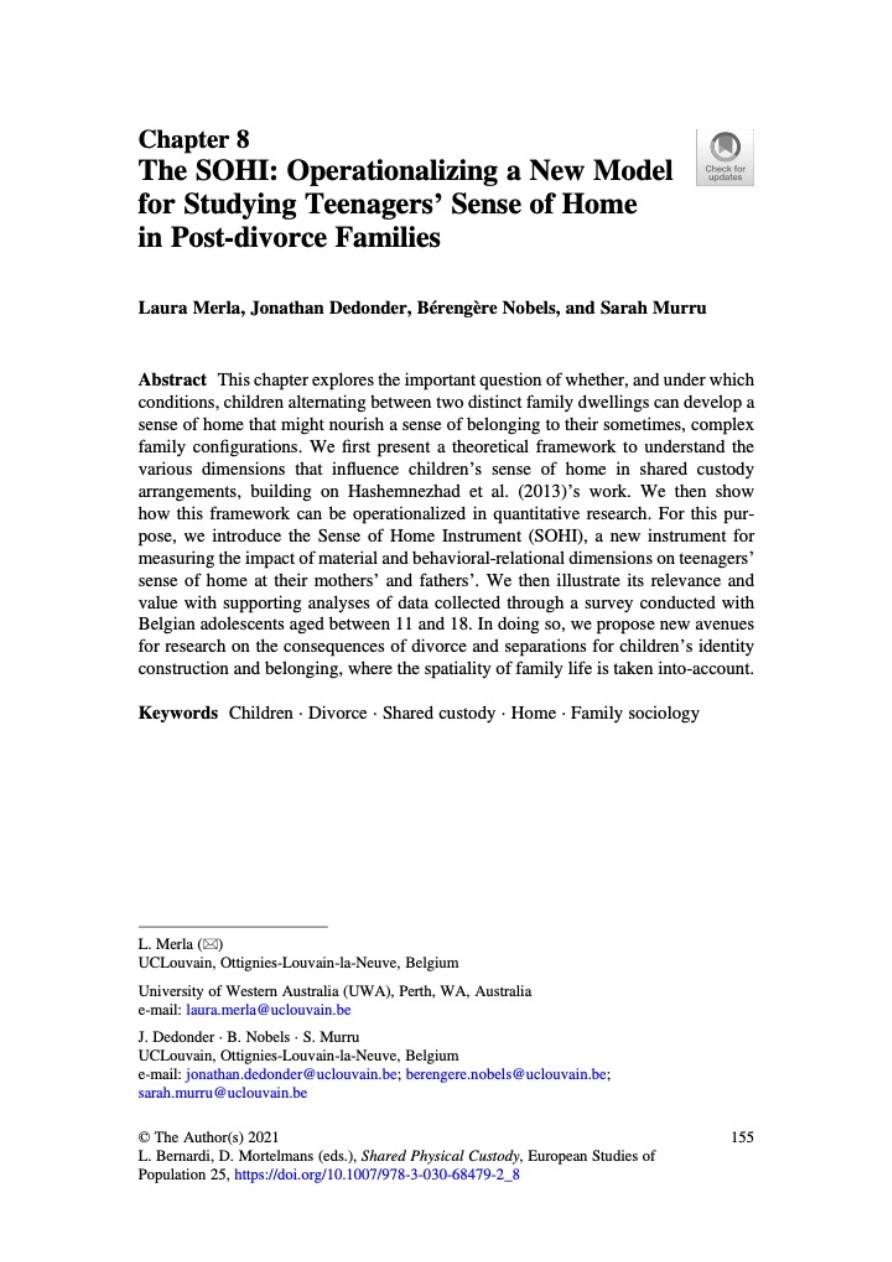

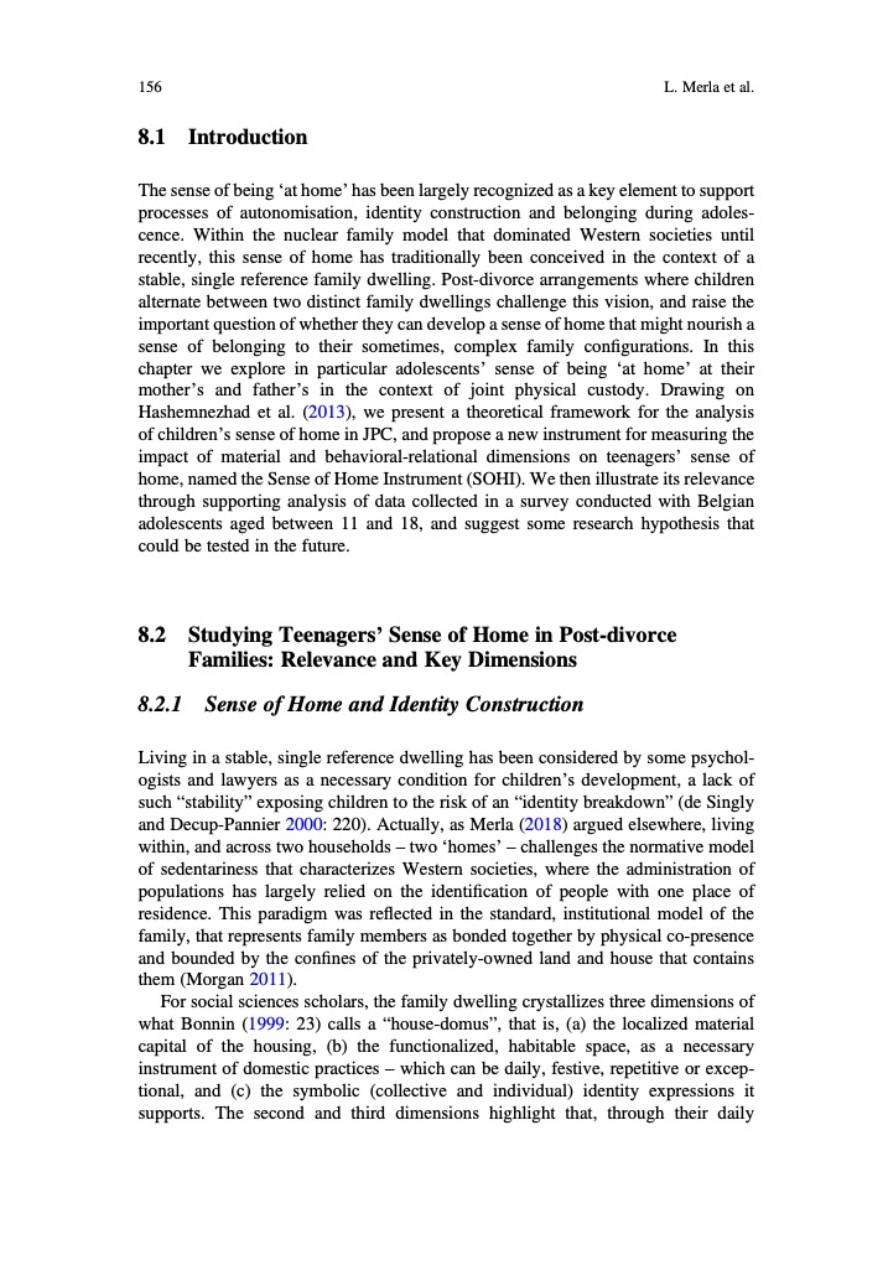

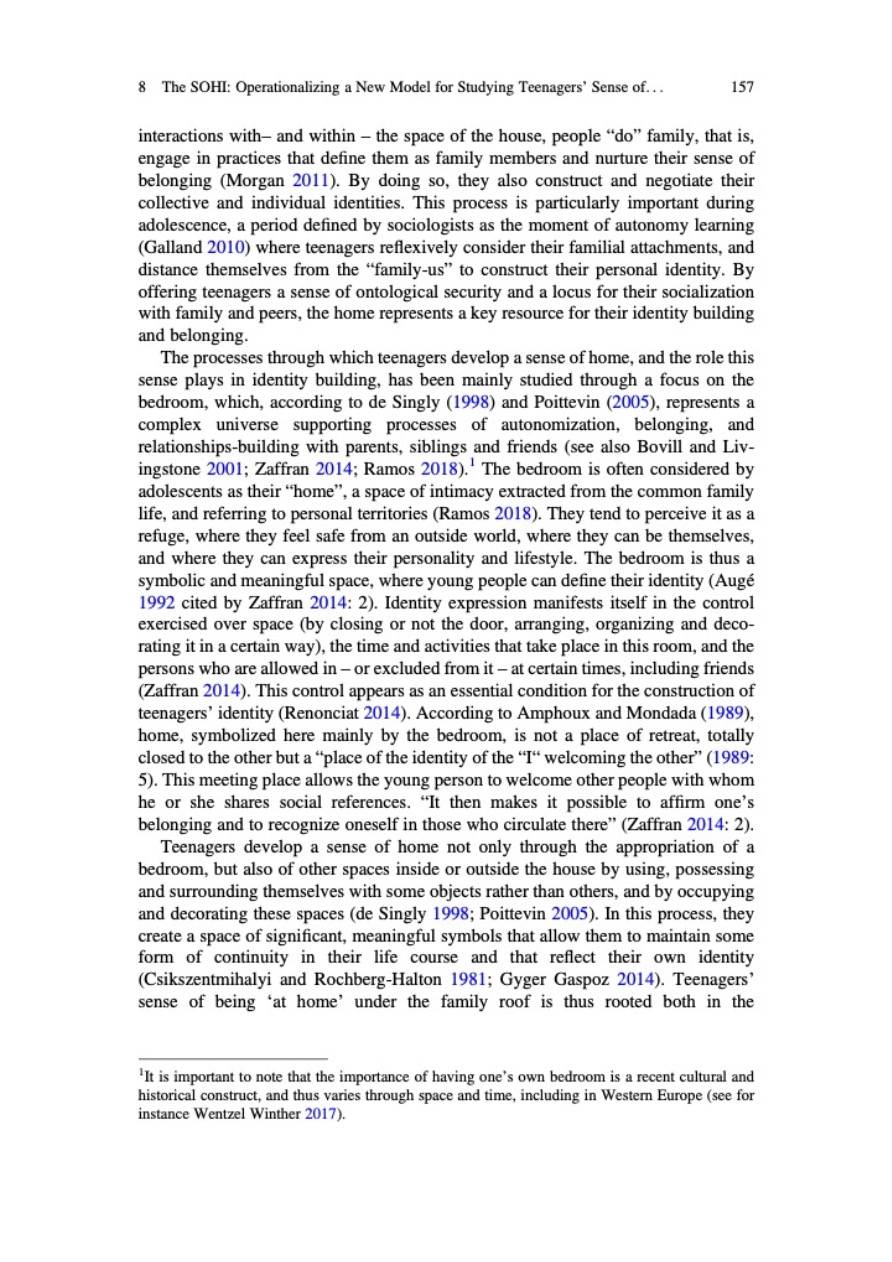

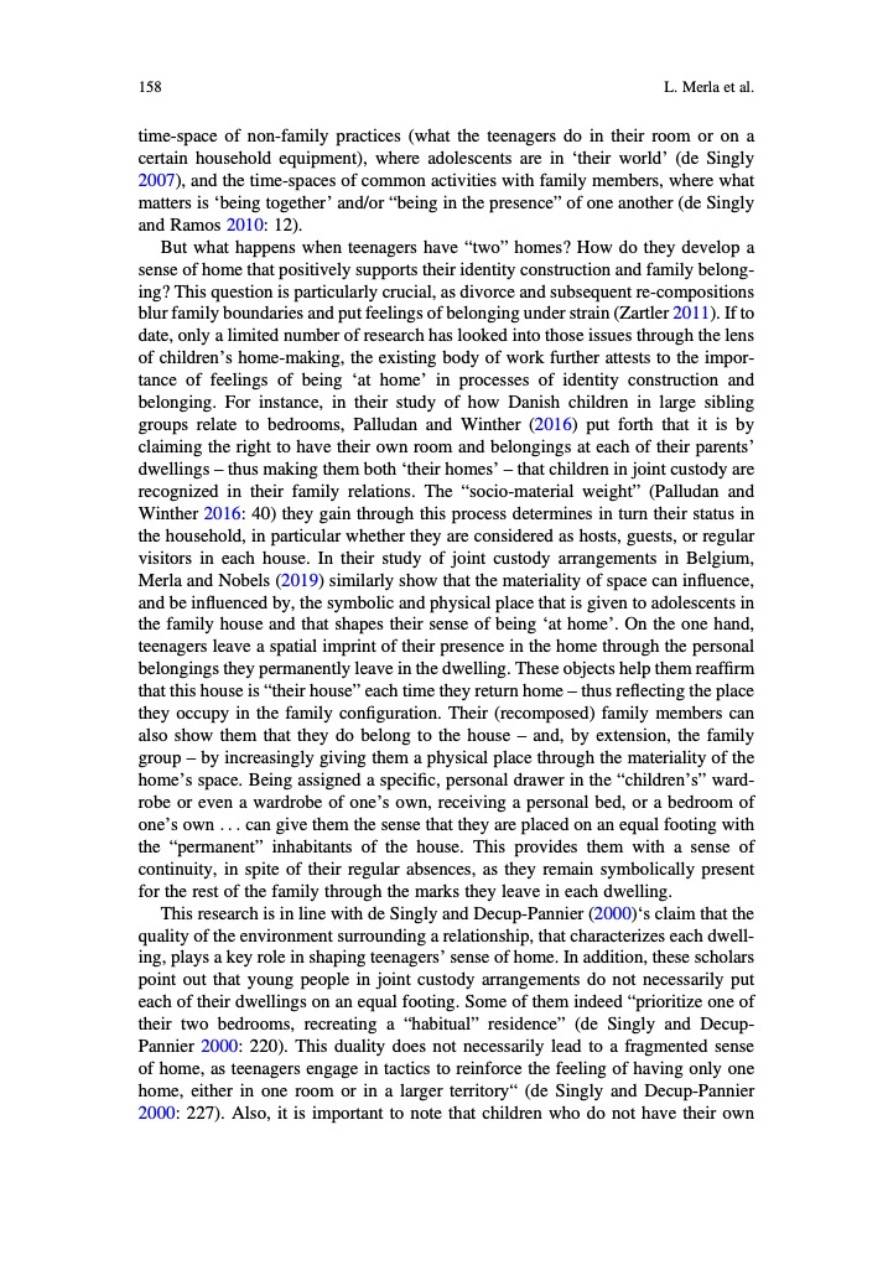

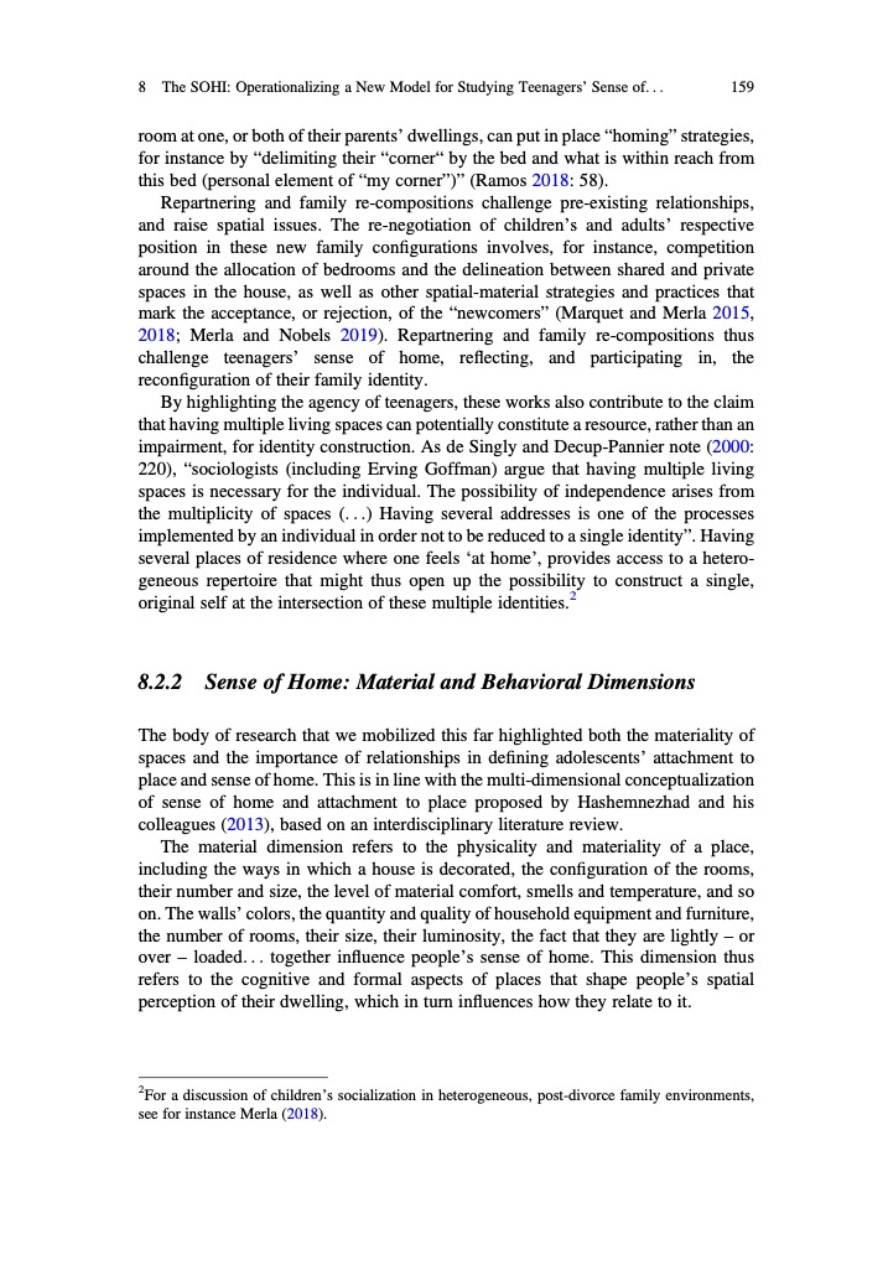

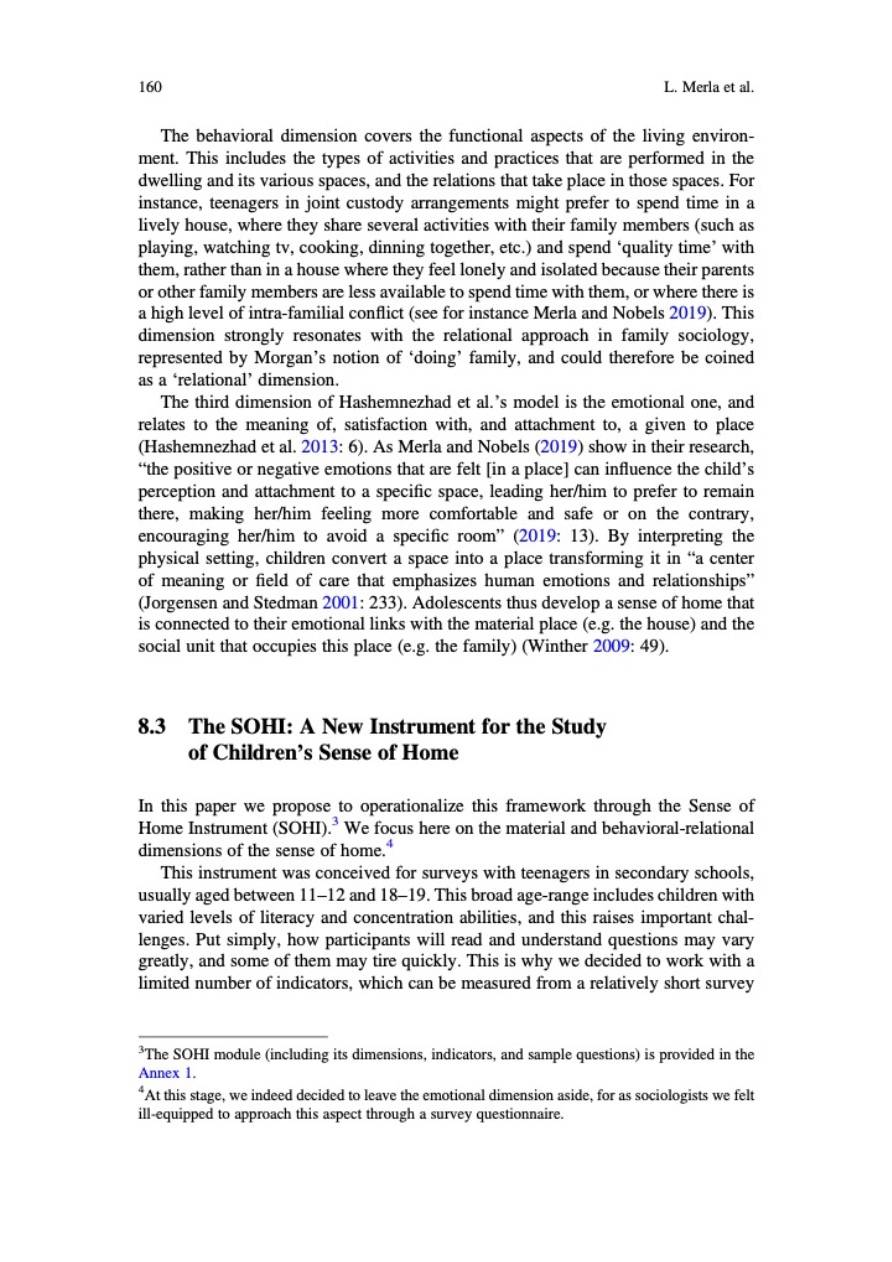

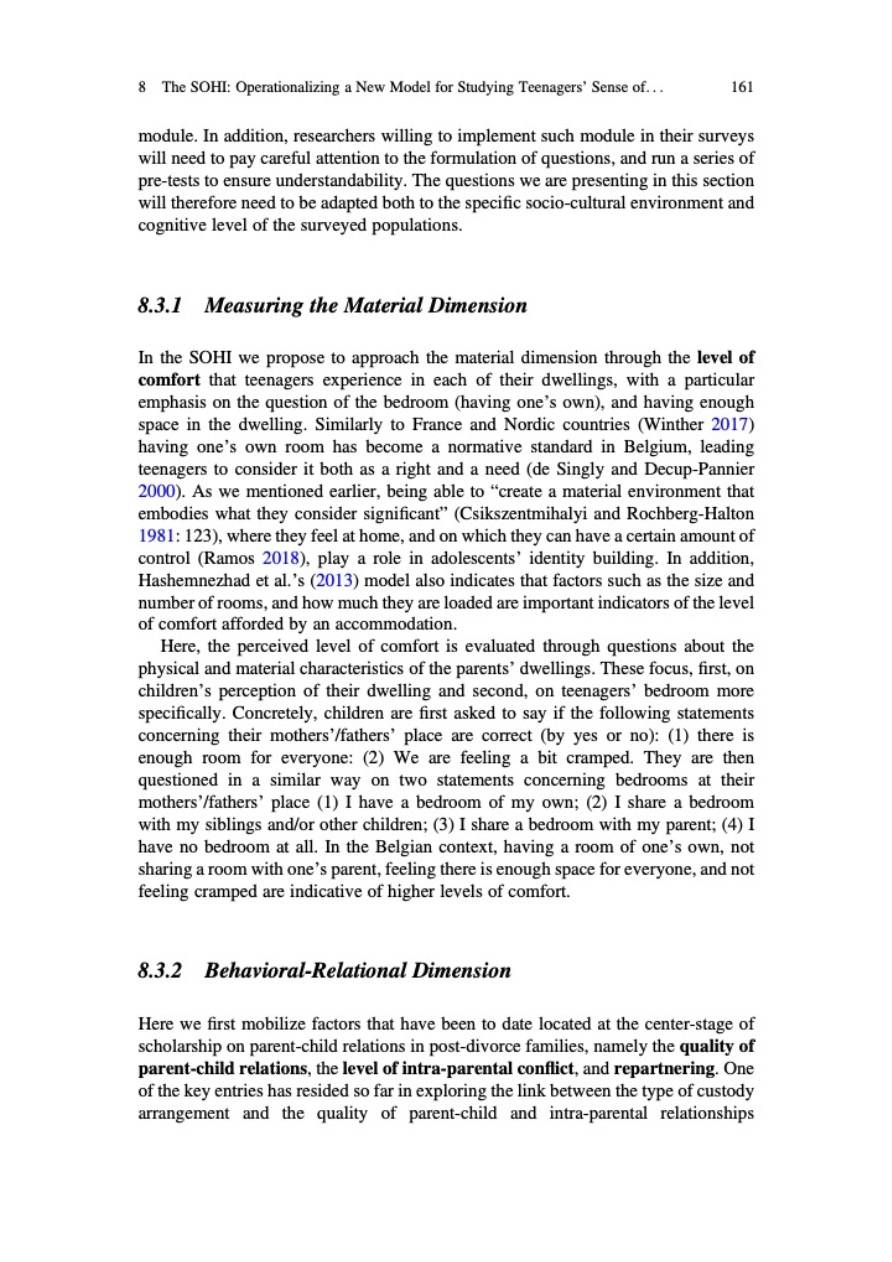

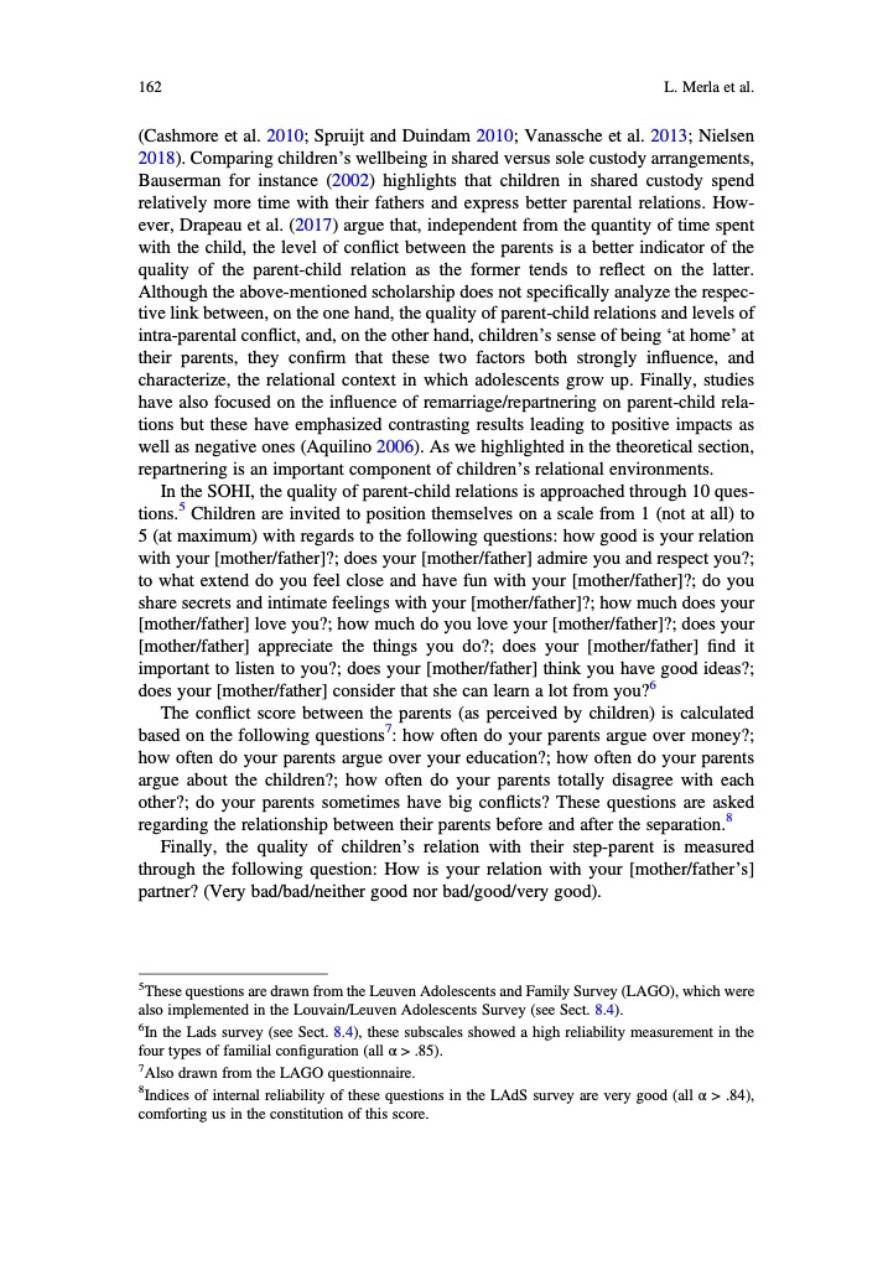

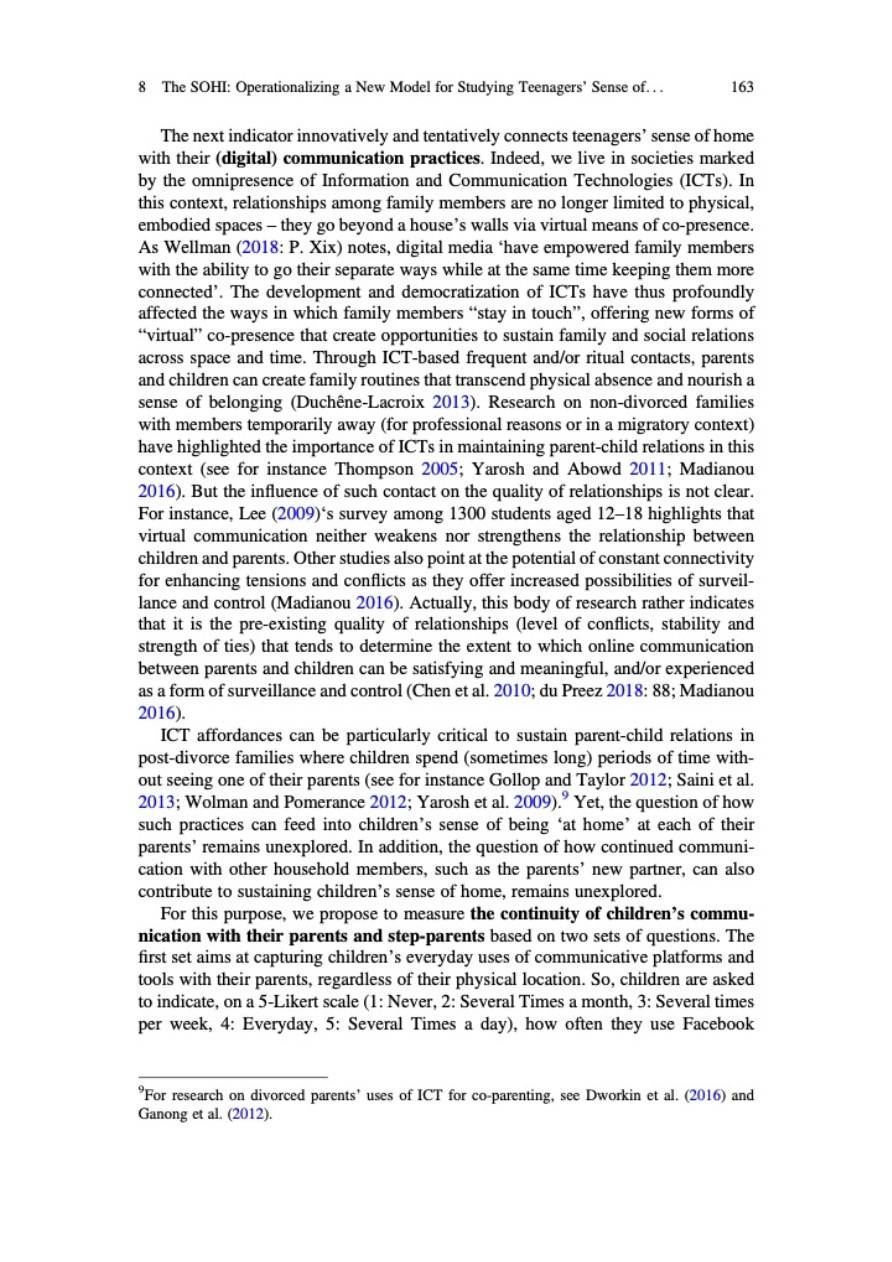

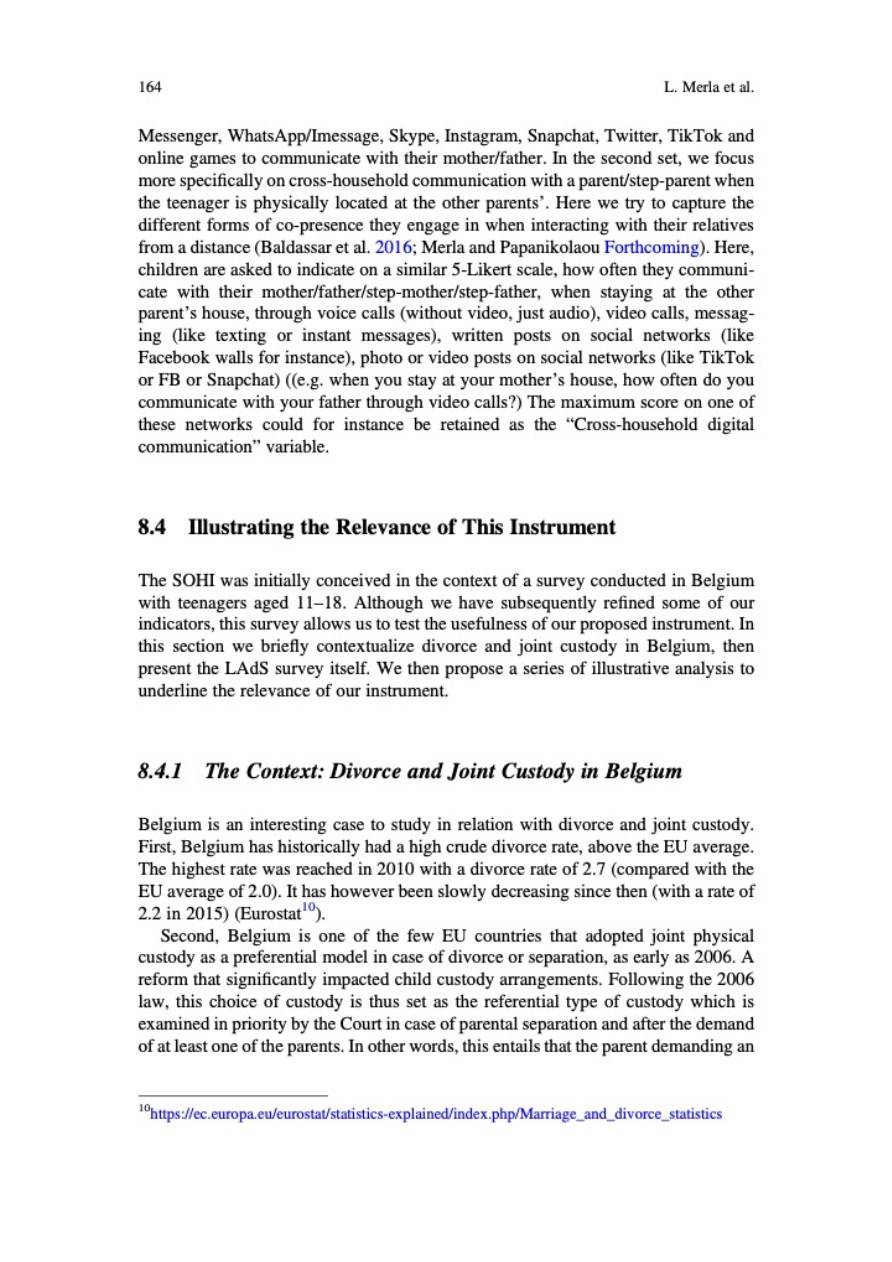

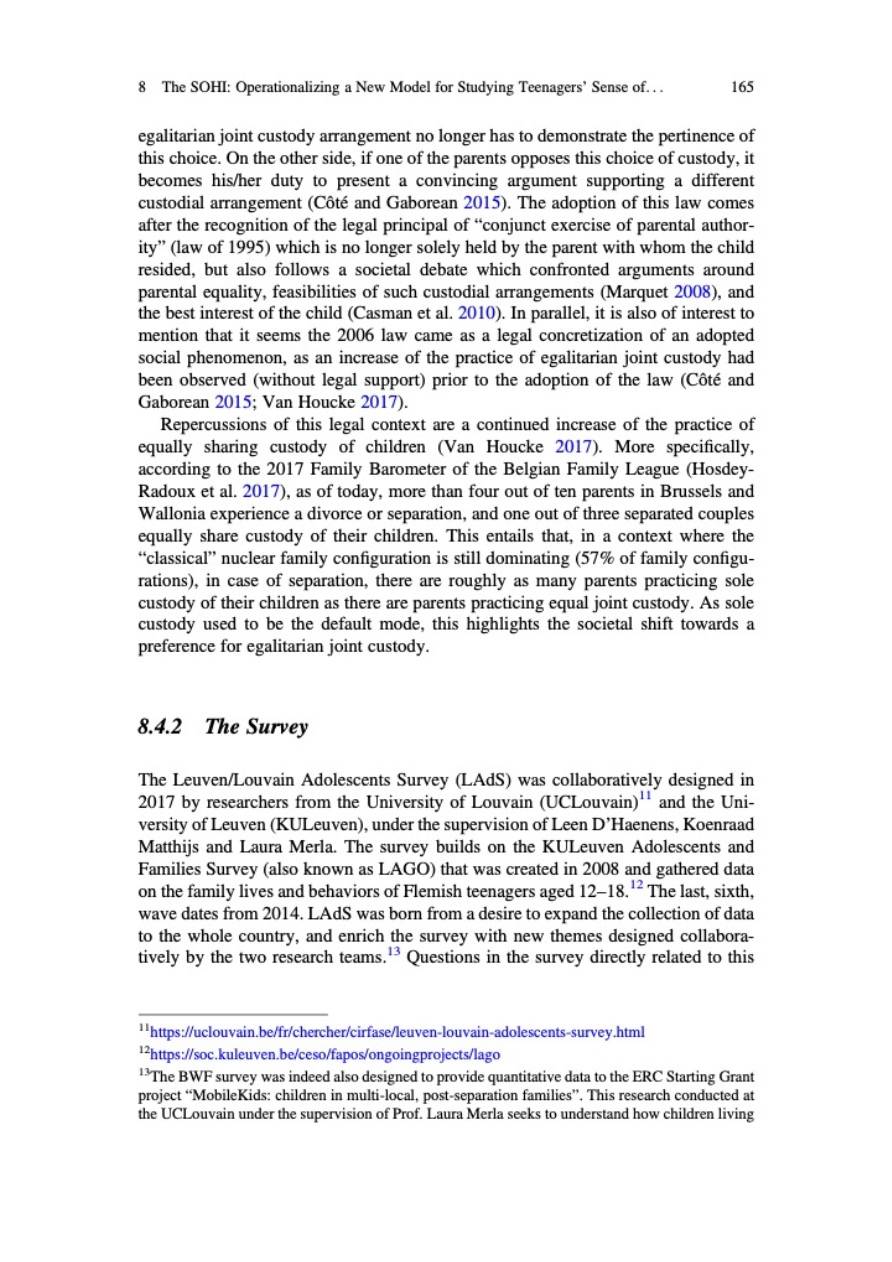

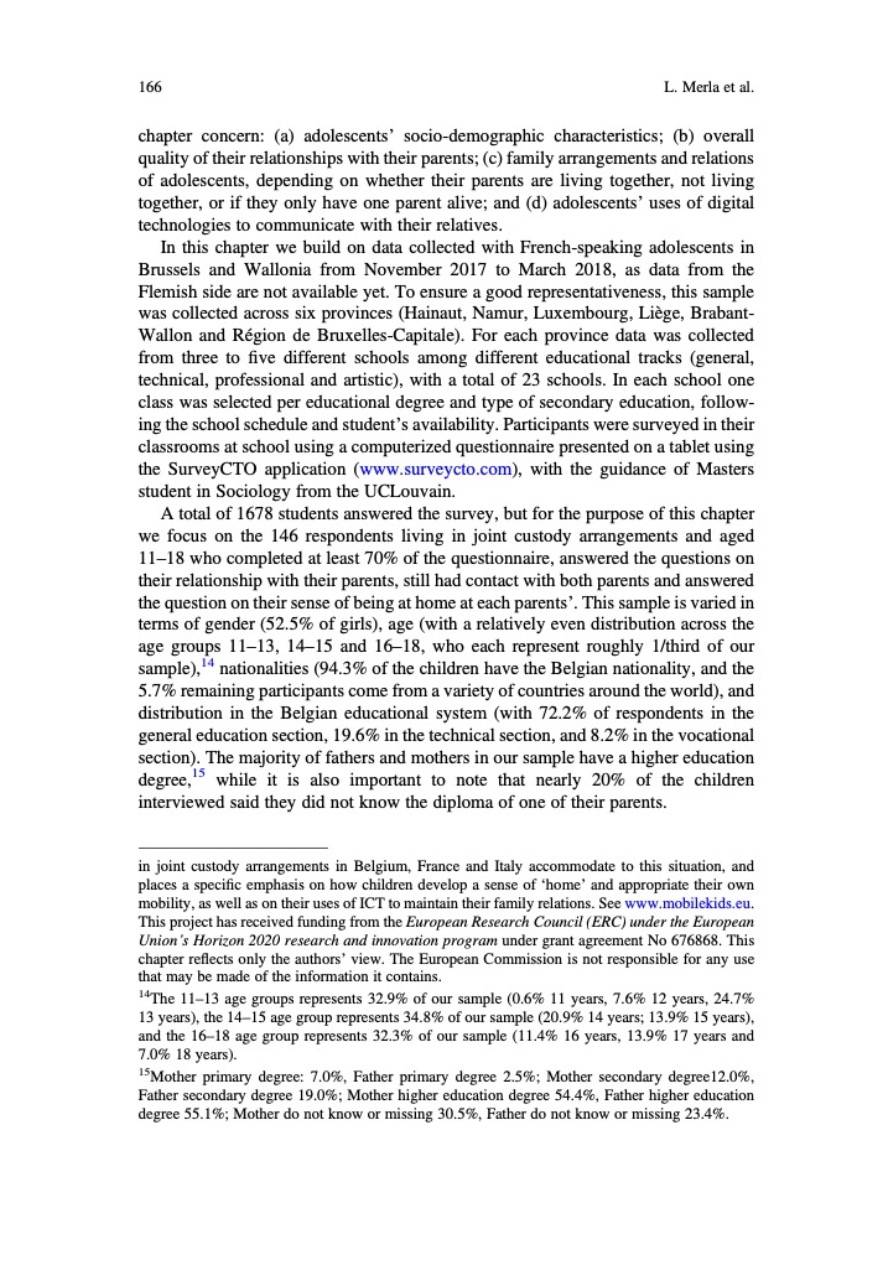

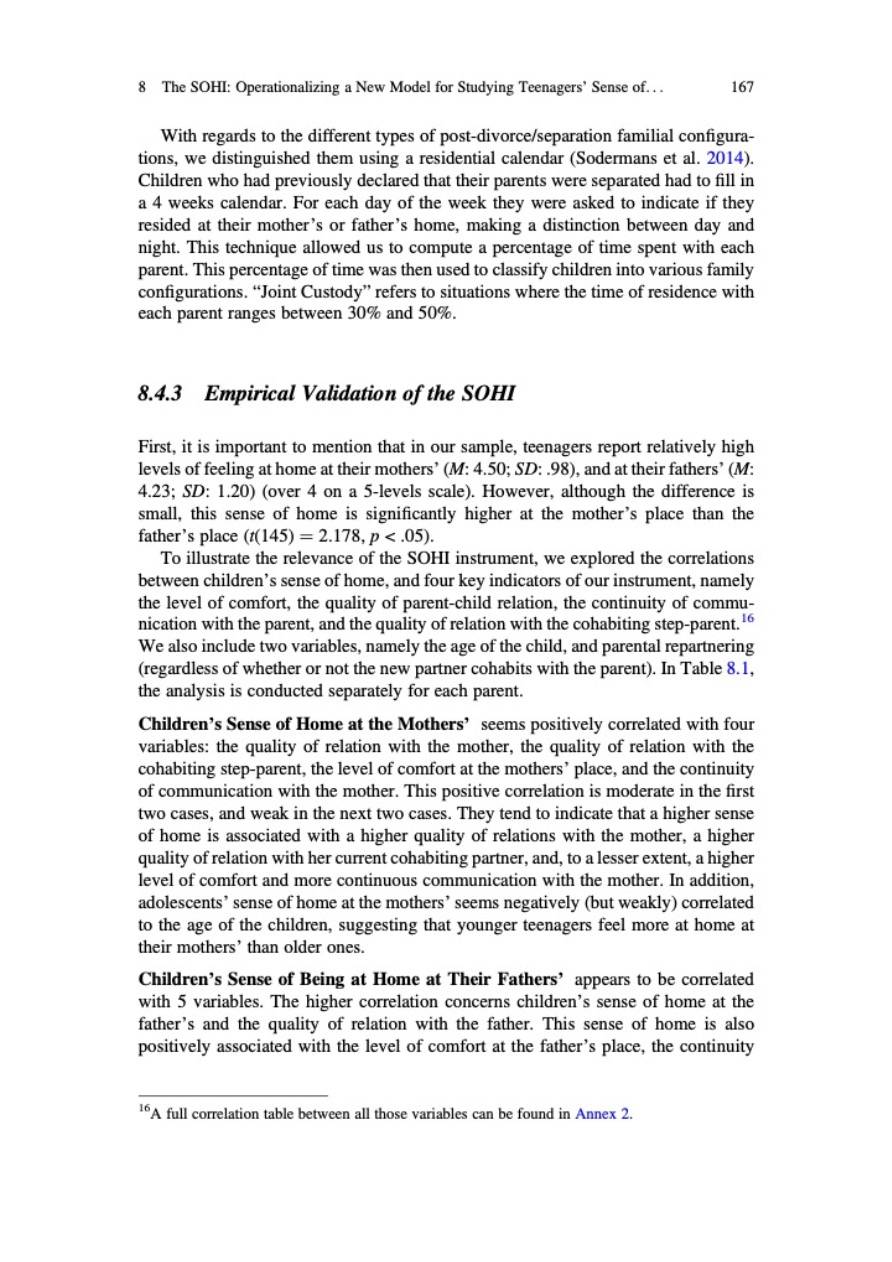

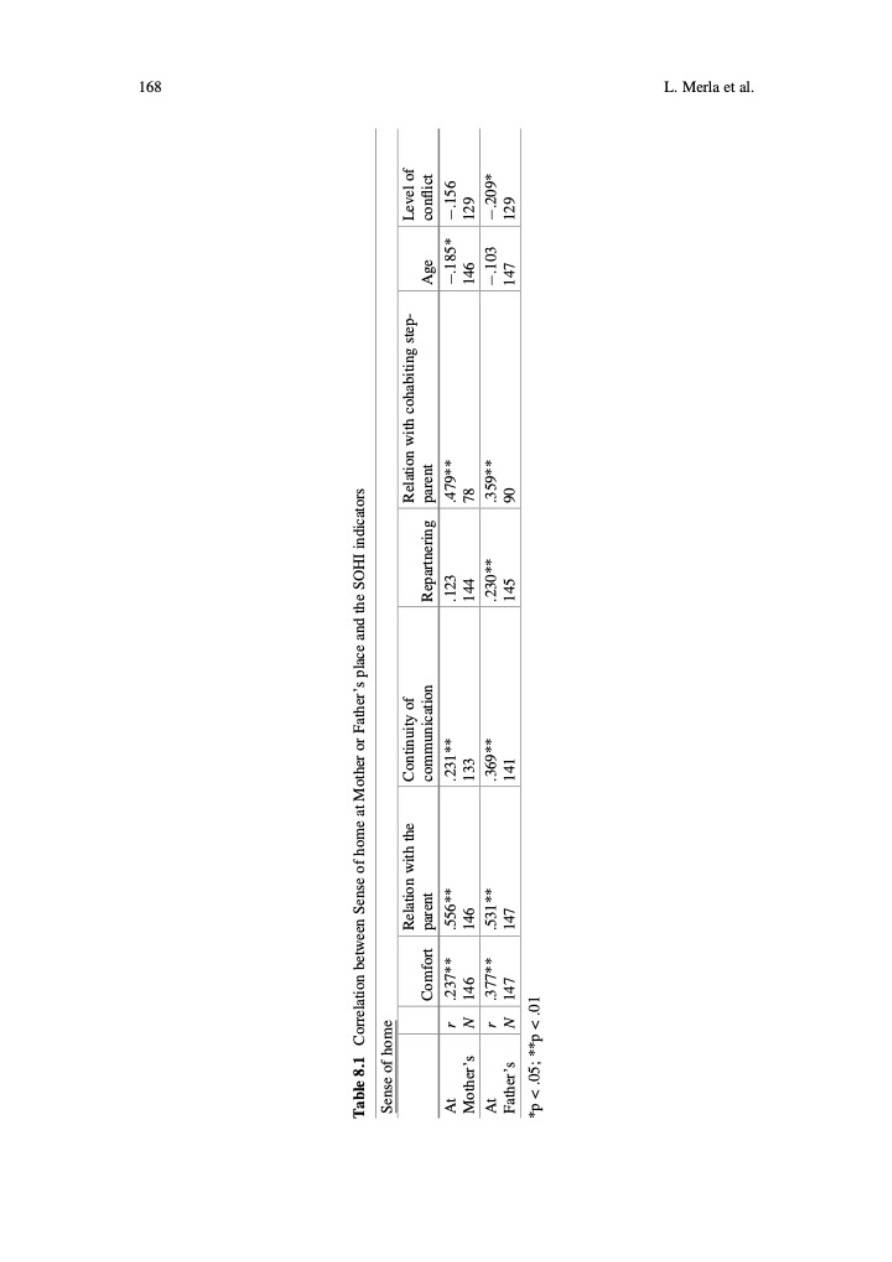



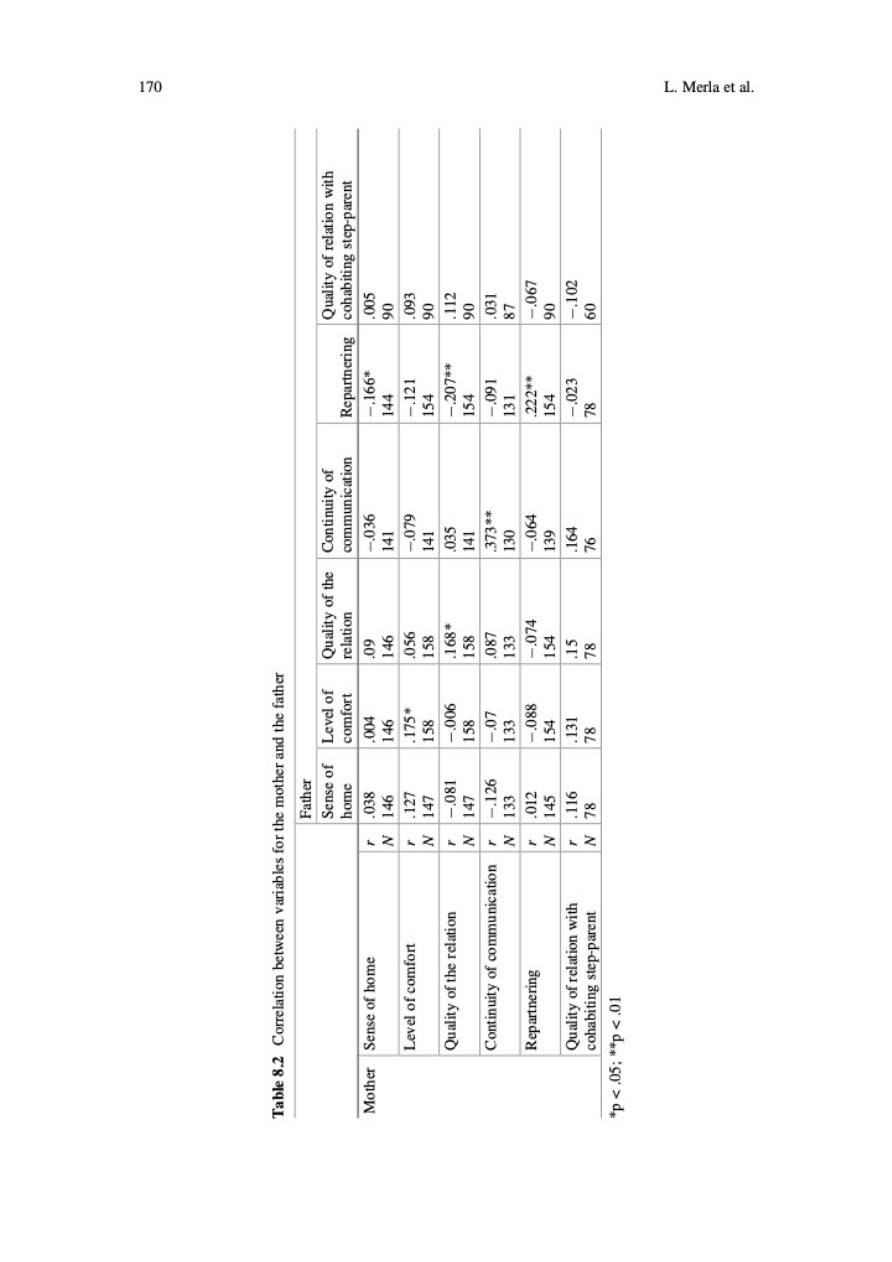

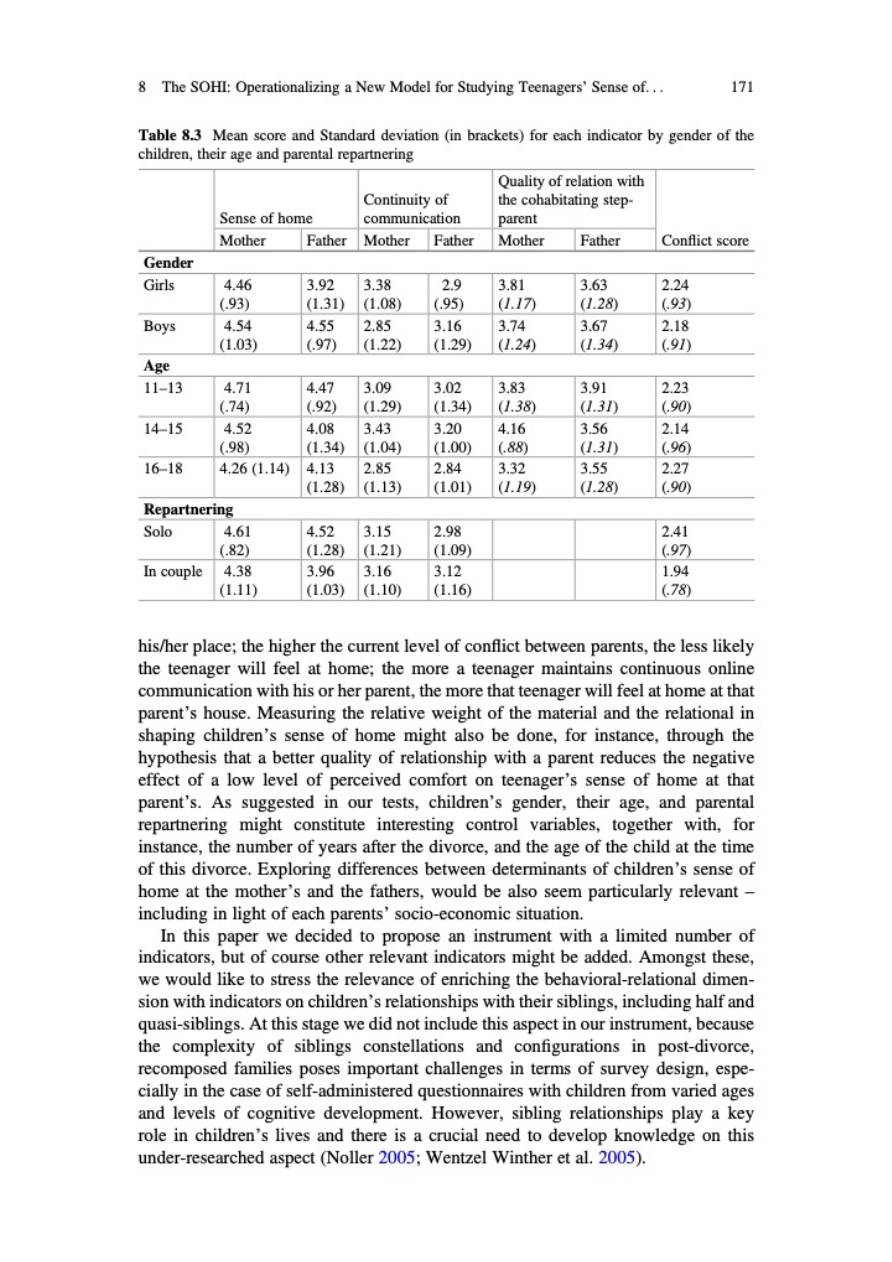

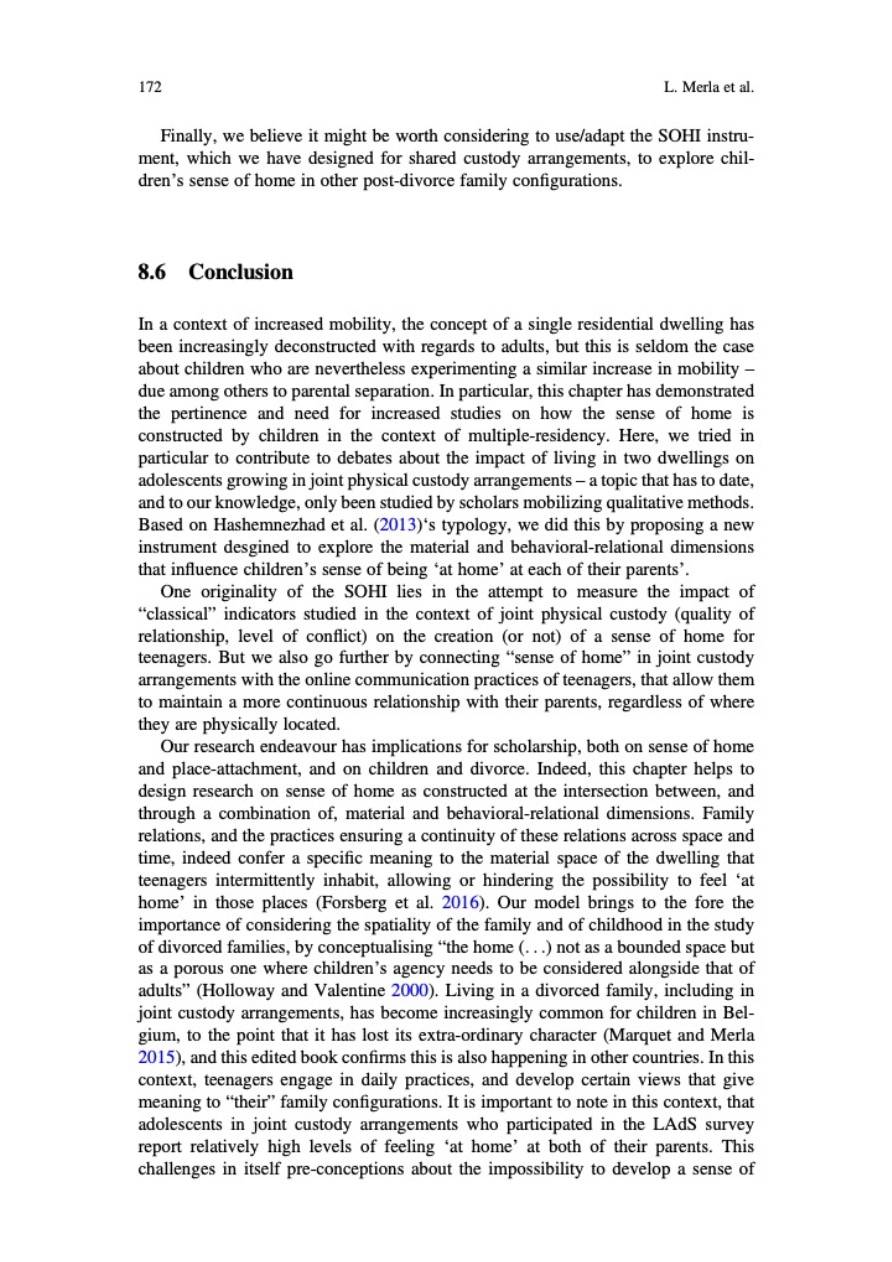

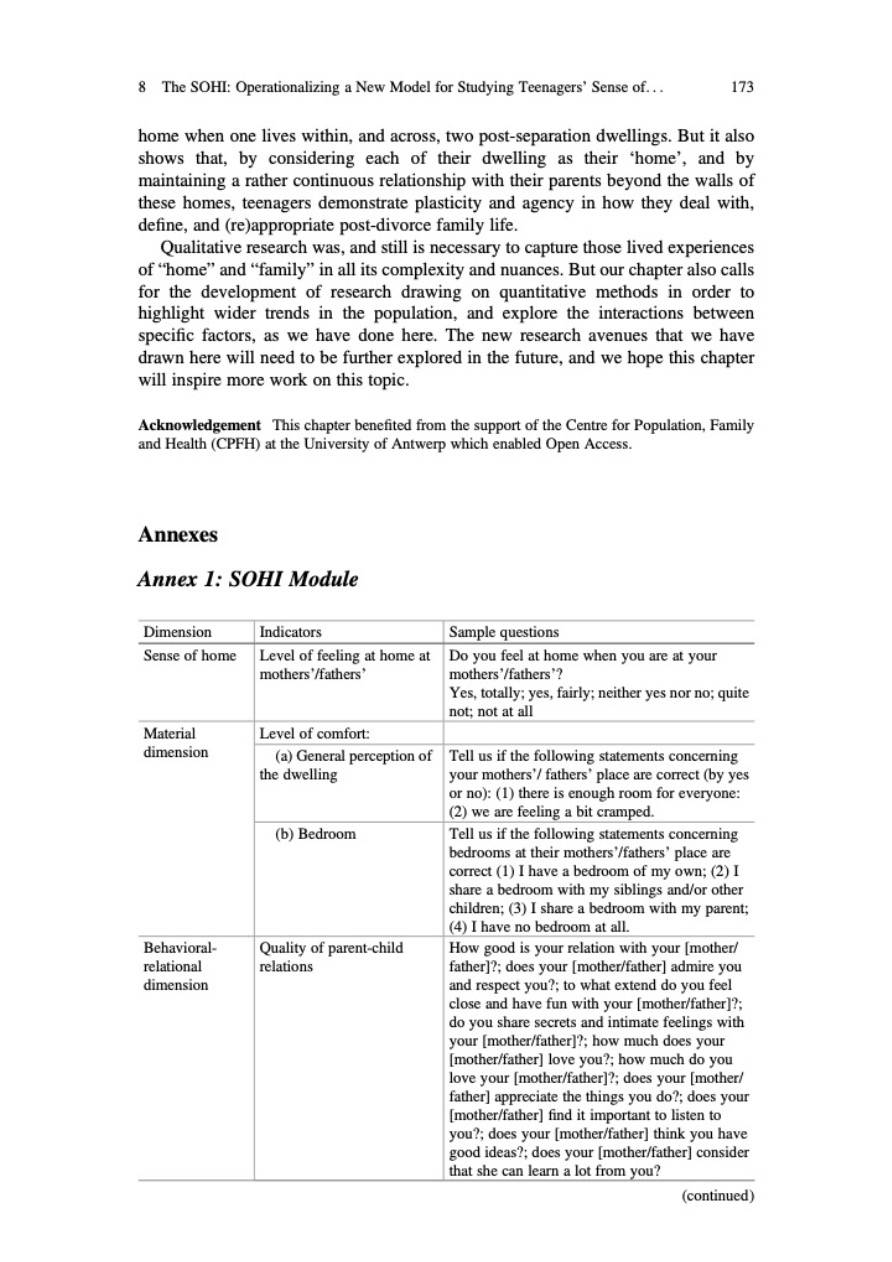

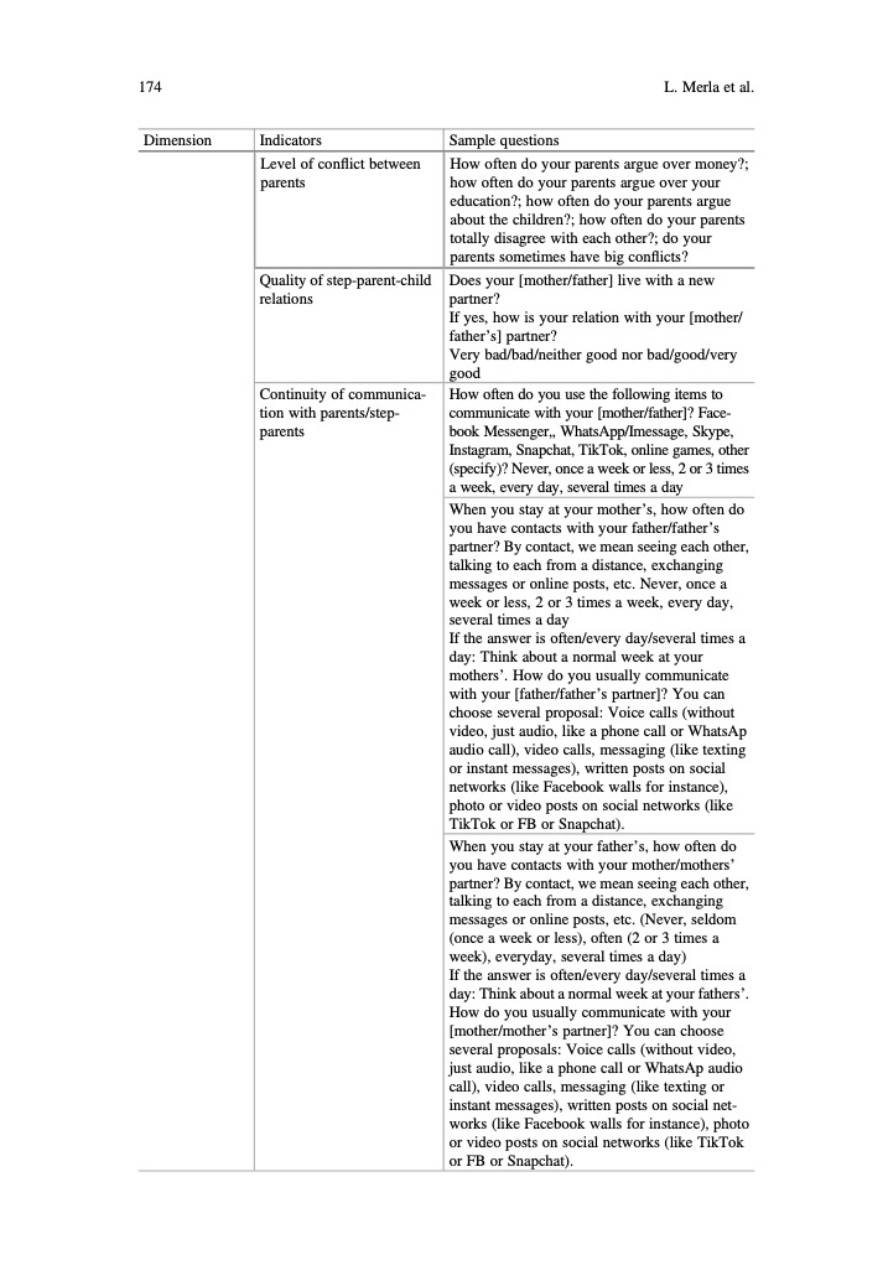

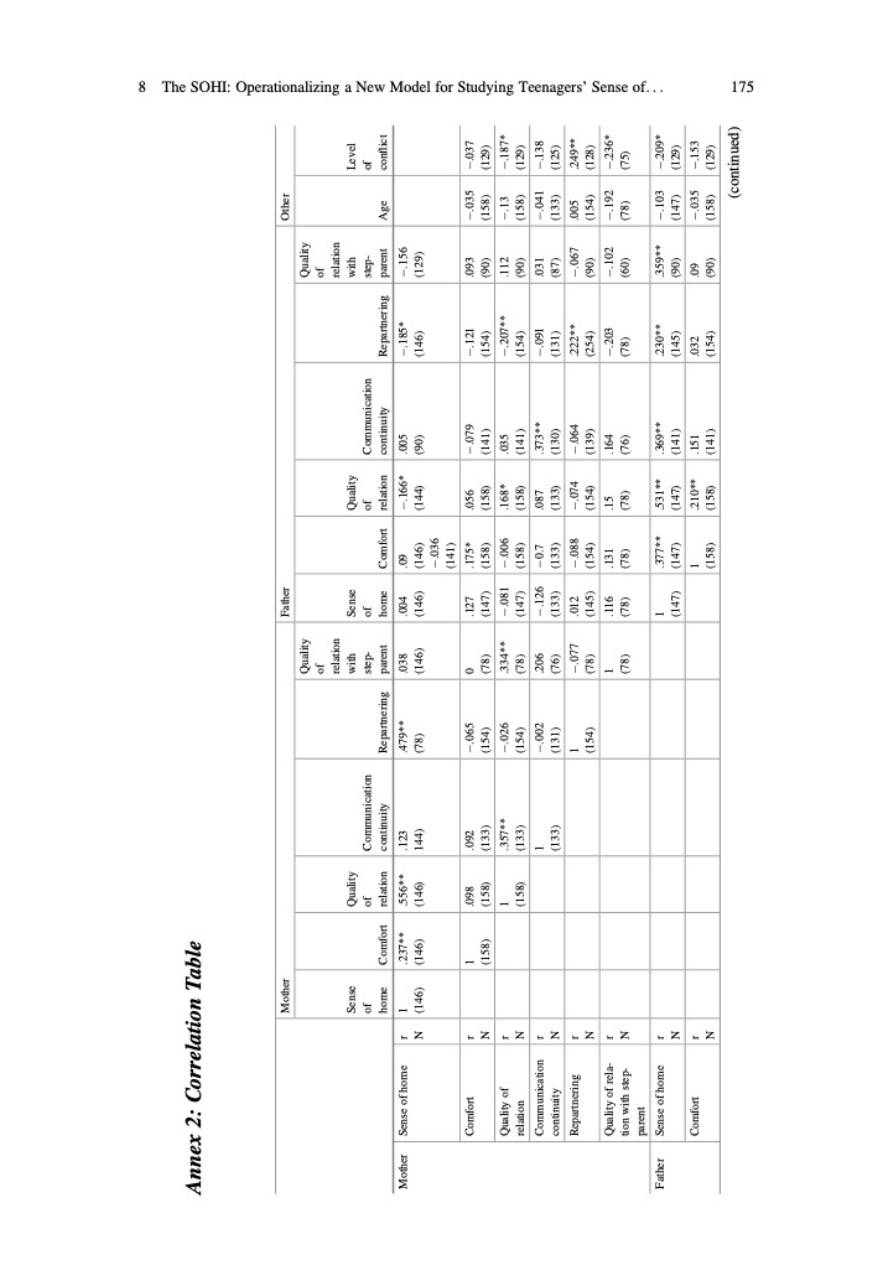

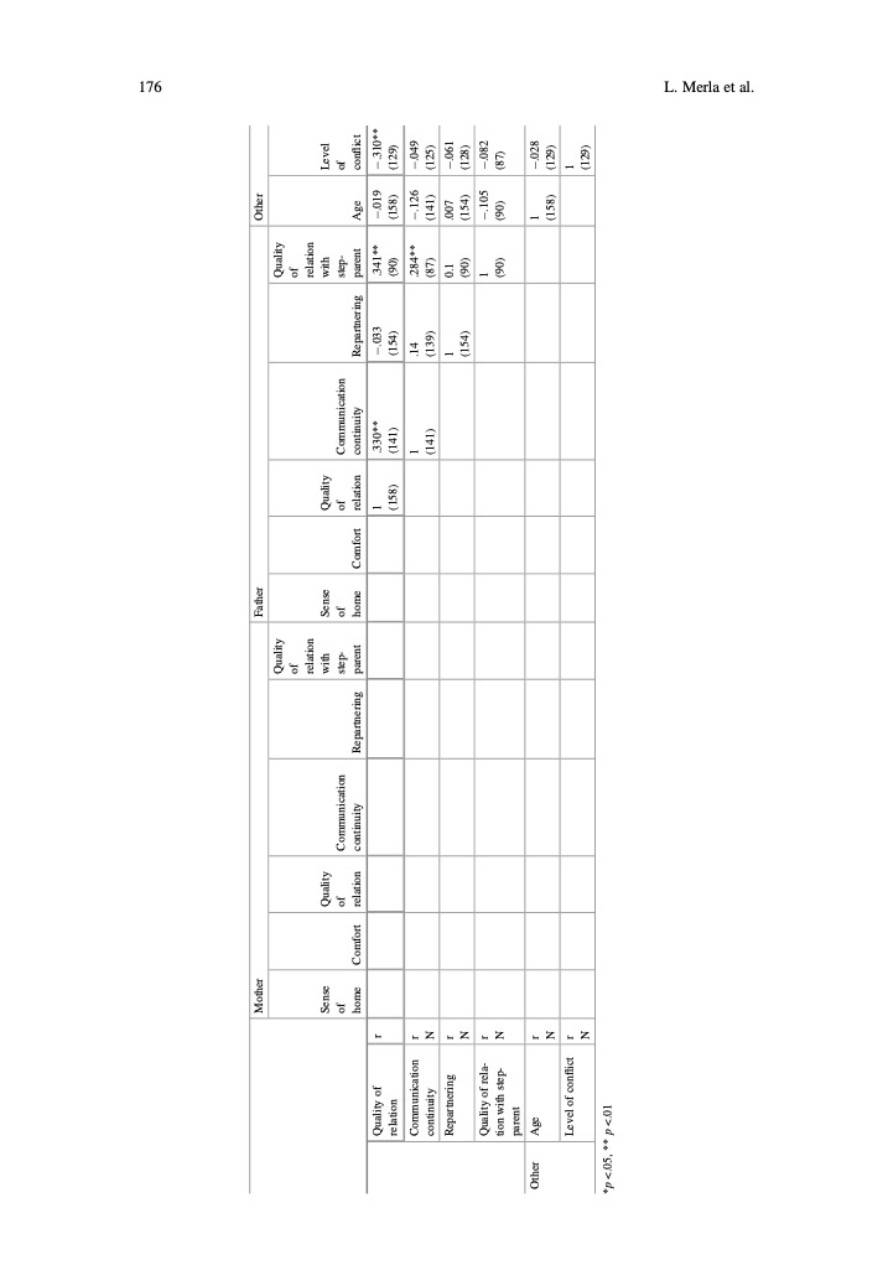

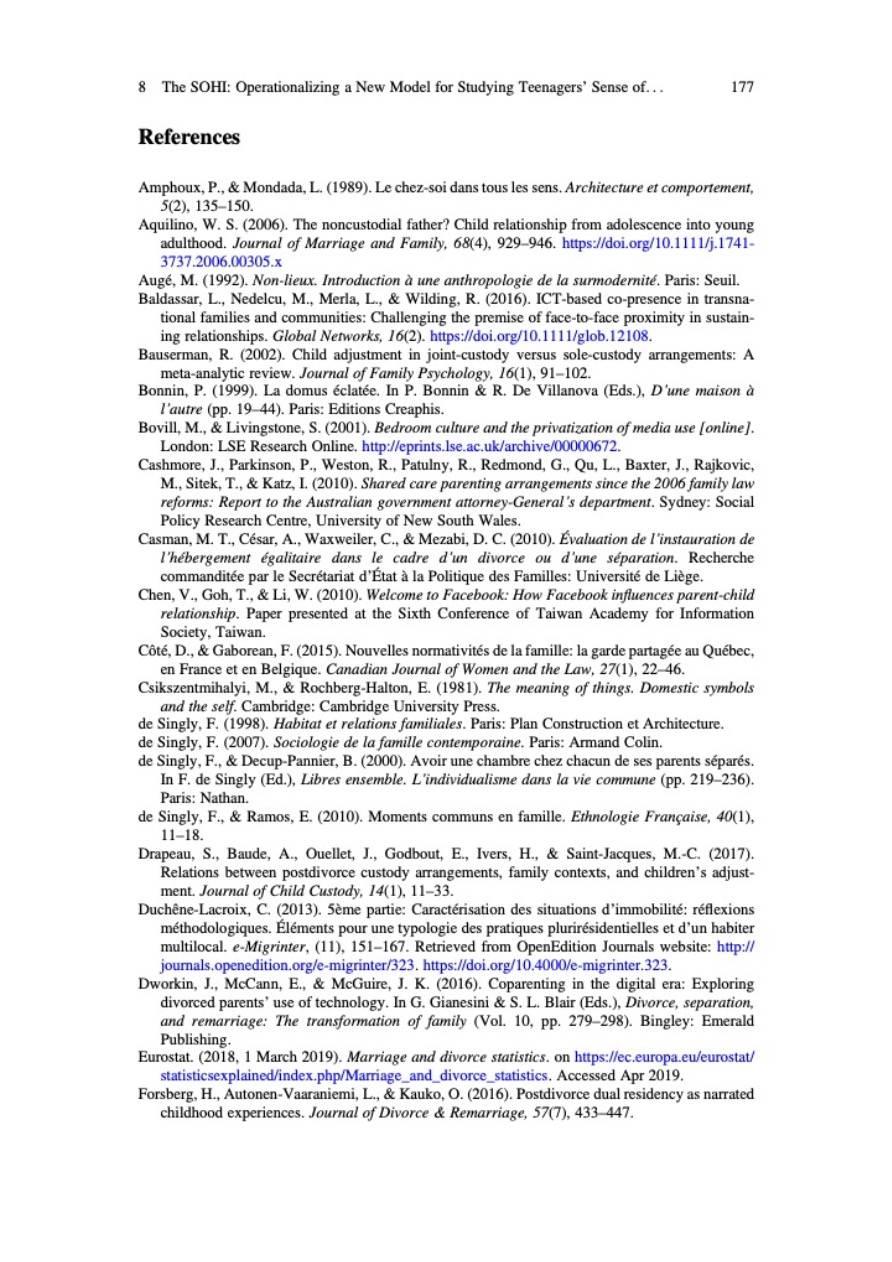

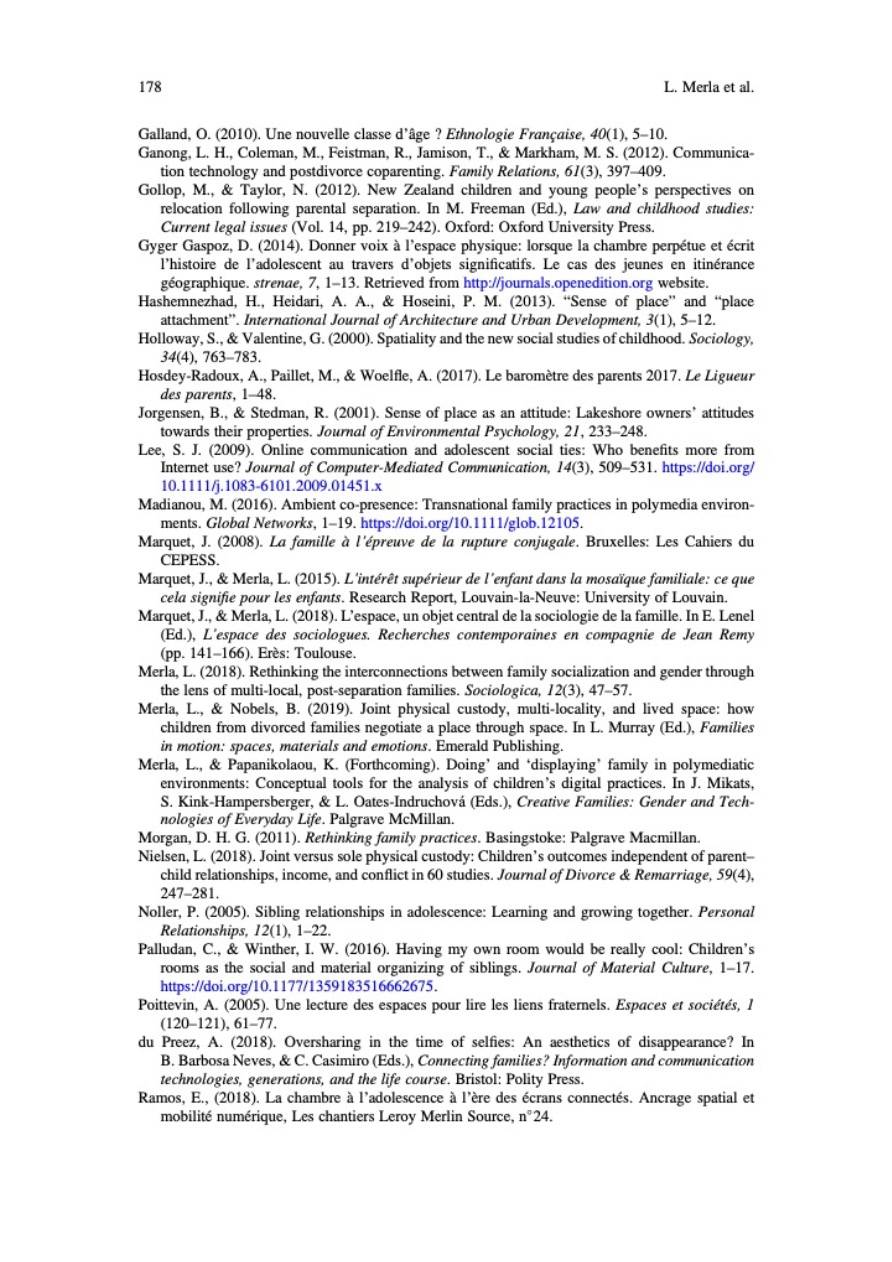

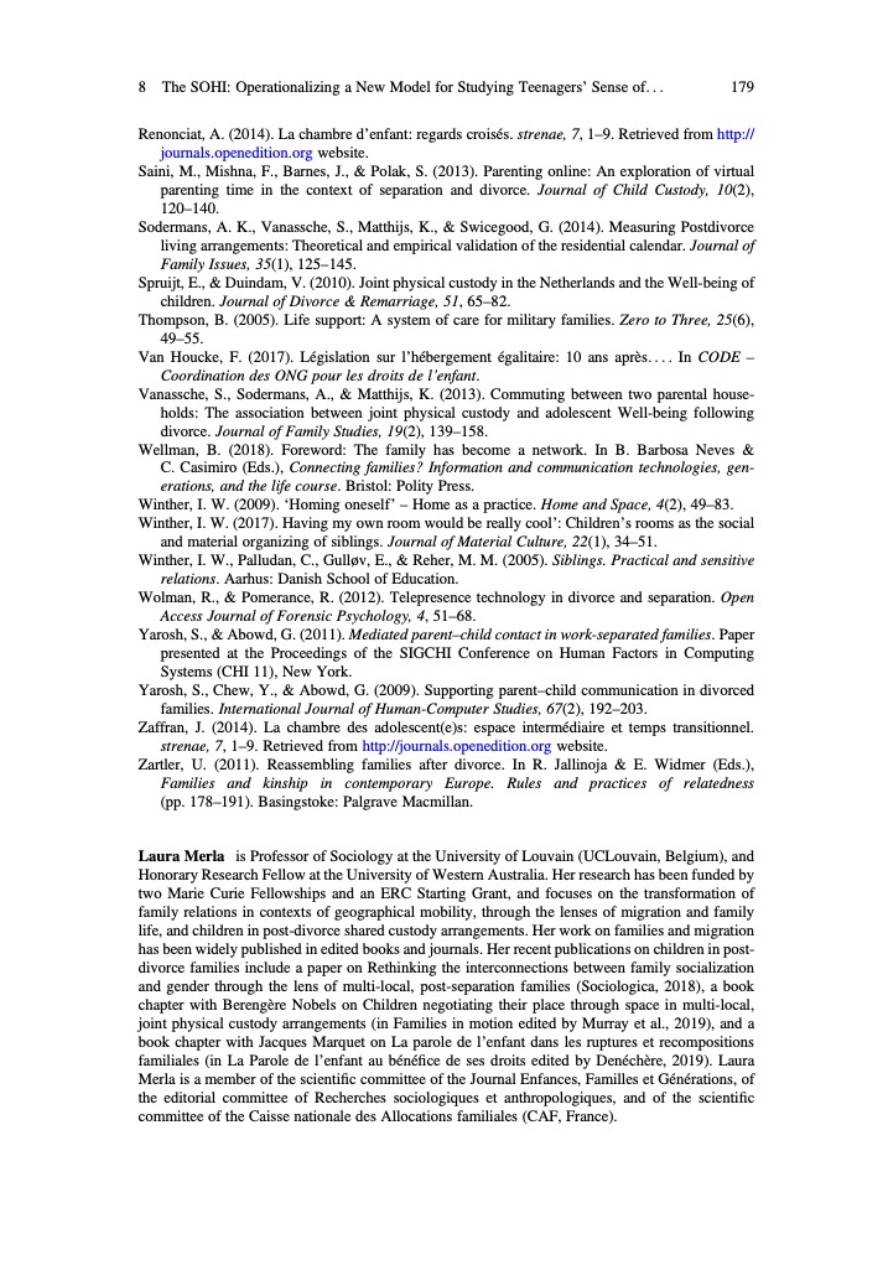

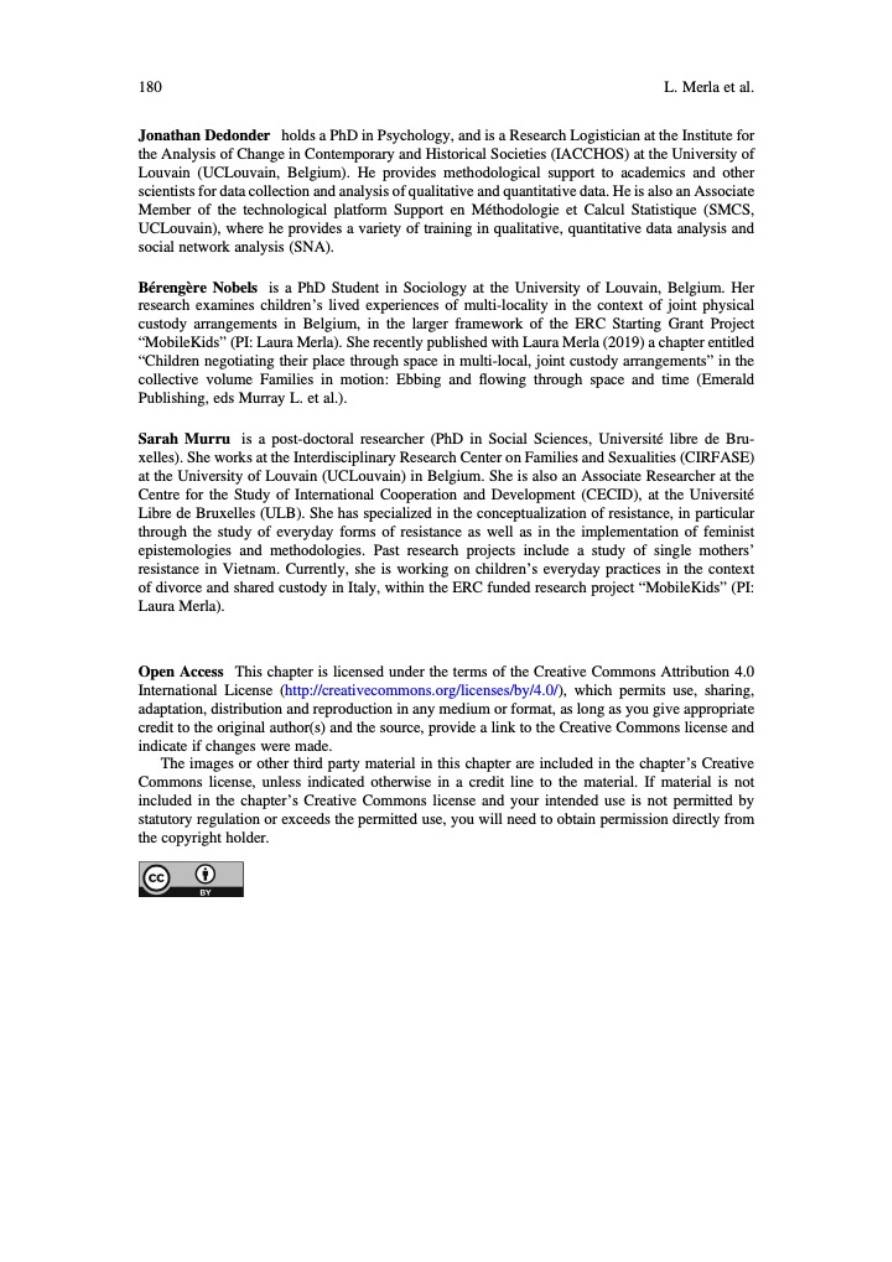
Author
Jonathan Dedonder
Bérengère Nobels
Sarah Murru
